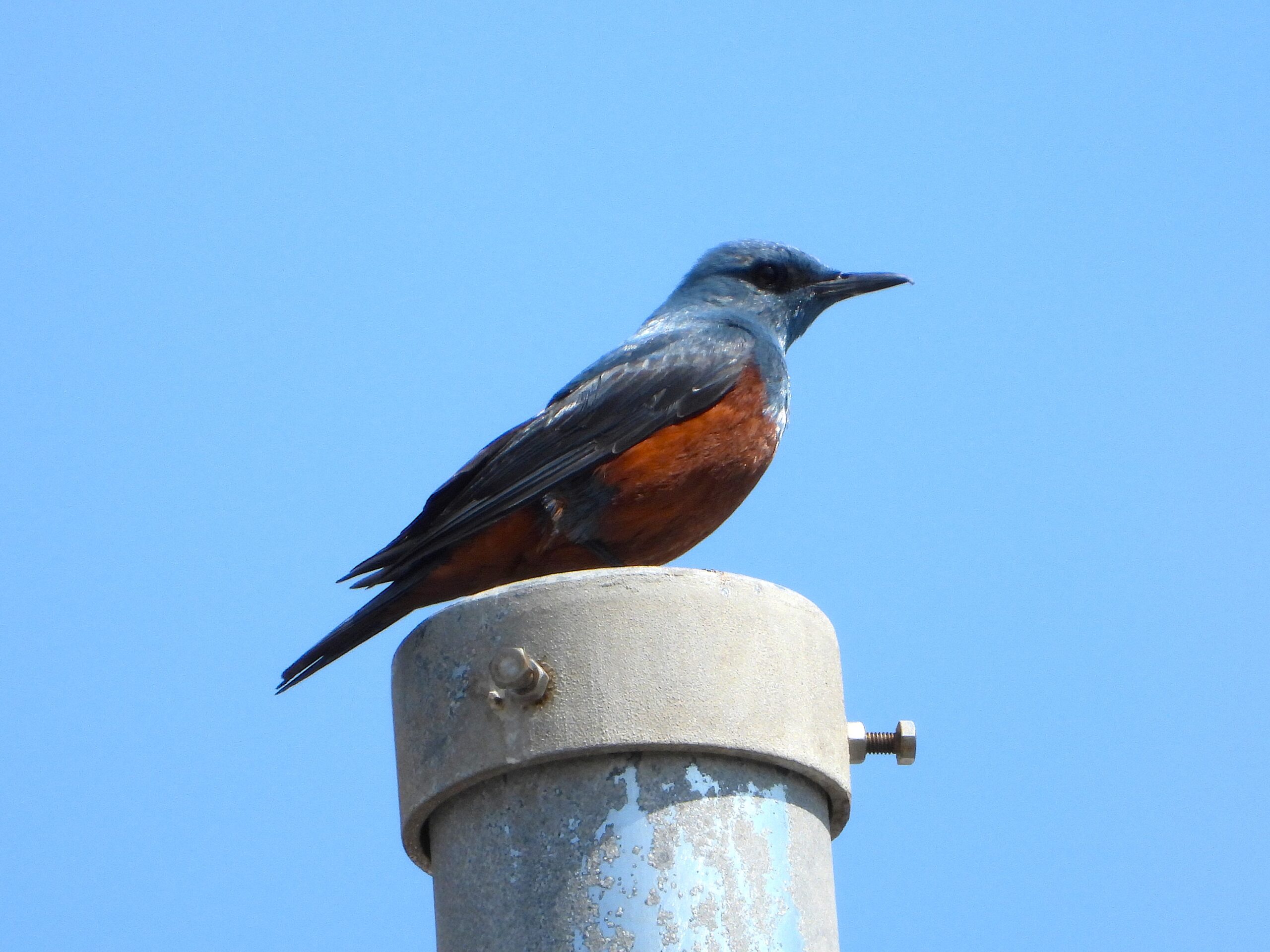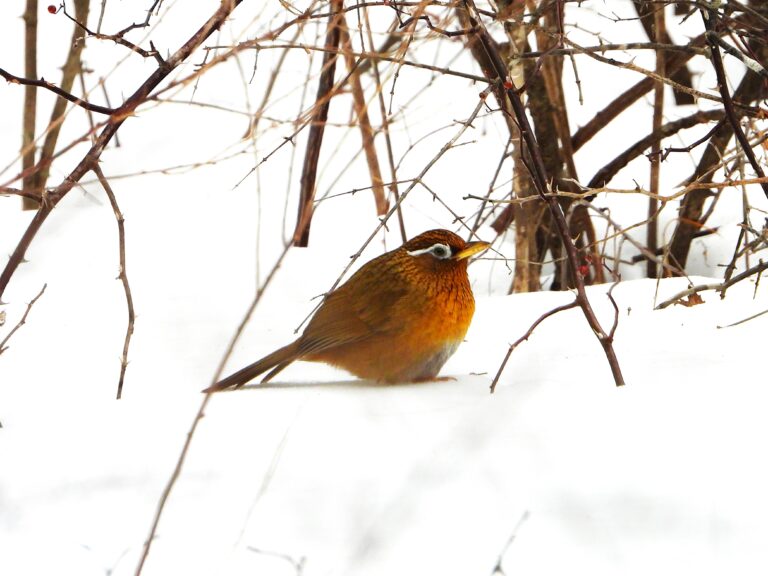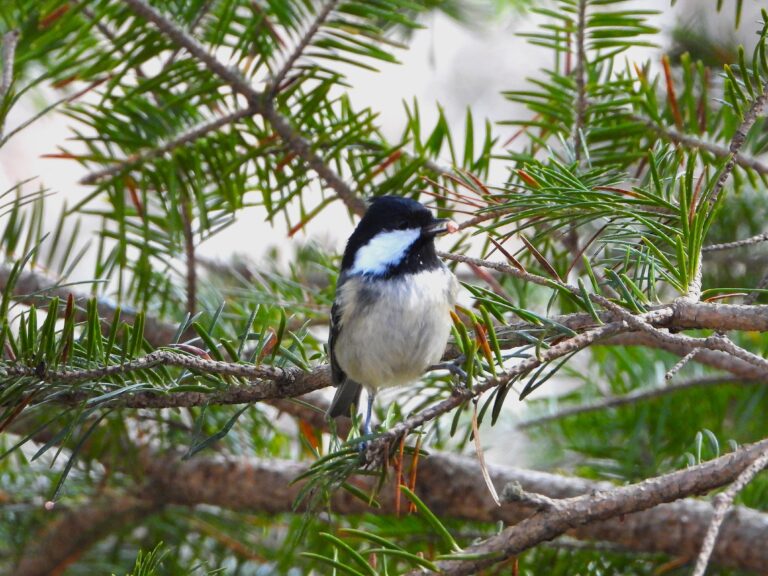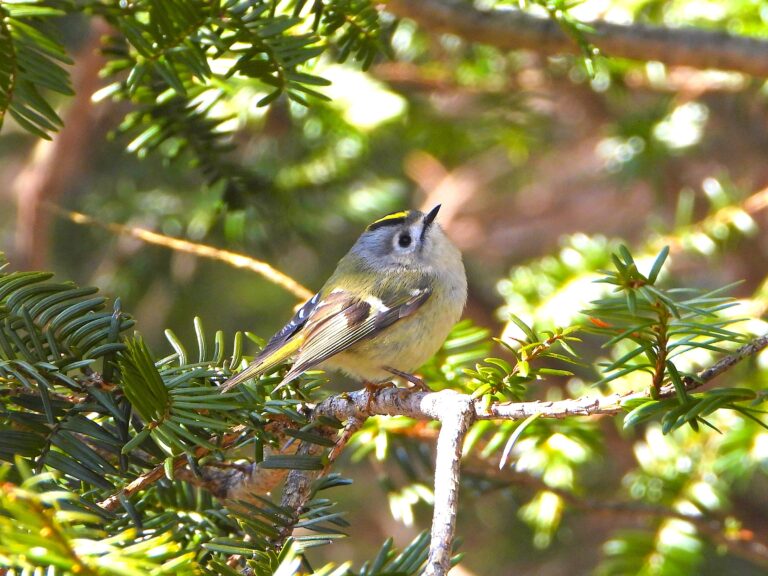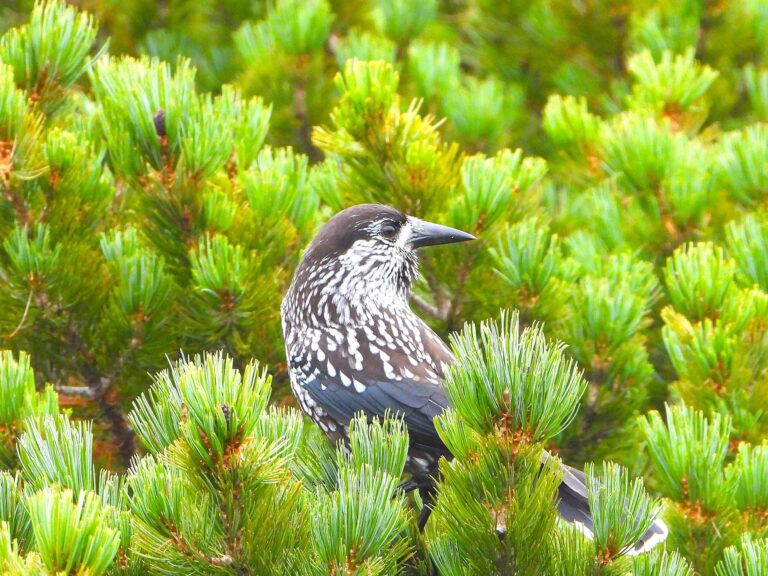Blue Rock Thrush (Monticola solitarius) – Wildlife of Japan
Introduction
The Blue Rock Thrush is a cliff- and harbor-loving songbird that has increasingly adapted to human structures such as seawalls, bridges, and buildings. In Japan, most birds belong to the subspecies philippensis, noted for males with blue upperparts and rufous underparts and females with brown, scaly patterning. Typical length is about 23 cm.
Appearance
Adult males of philippensis show dark blue head, back and breast with rufous belly; wings and tail look darker. Females and juveniles are brownish-gray with dense, scale-like patterning; young males may resemble females before molt.
Habitat & Distribution
In Japan it breeds widely from Honshu southward, is scarcer in Hokkaido, and uses rocky coasts, sea cliffs, breakwaters, river mouths, and increasingly artificial substrates (concrete walls, buildings). Inland expansion has been documented nationwide, with many records now more than 10 km from the coast.
Where to See in Japan
Scan fishing ports, seawalls, and rocky headlands; also check high ledges on warehouses, bridges, and tall buildings in coastal towns and, increasingly, inland cities. Dawn and late afternoon perches on lamp posts or rooftop corners are typical.
Behavior
Often perches conspicuously, then drops to ground or rocks to snatch prey; a subtle tail dip is common. The song is clear and far-carrying, delivered from elevated edges such as rocks, seawalls, or roofs in spring. Pairs defend territories centered on crevices.
Diet
Mainly insects and other small invertebrates; along seawalls it also takes littoral prey such as small crustaceans. Animal prey dominates year-round, with some seasonal fruit use reported in references for the species complex.
Reproduction
Nests in cavities or crevices of cliffs and, in cities, in gaps of buildings, bridge undersides, vents, eaves, or even ornamental statues. Site fidelity to old nests is high. In Okinawa, laying starts from mid-March; clutch size averages 4.9 (range 3–6), incubation lasts about 15 days, and the nestling period is 15–18 days. Post-fledging care continues for about 17–25 days, with fledgling mortality often caused by cats, falls, or vehicles.
Conservation
Global status: Least Concern, with a very large range and population. In Japan, adaptation to artificial structures appears to support a stable or even increasing presence in urban and inland areas.
Author’s Impression
When visiting seaside towns and fishing ports, the Blue Rock Thrush often greets me from a breakwater or rooftop. Its plumage shines even more beautifully when touched by the morning light.

